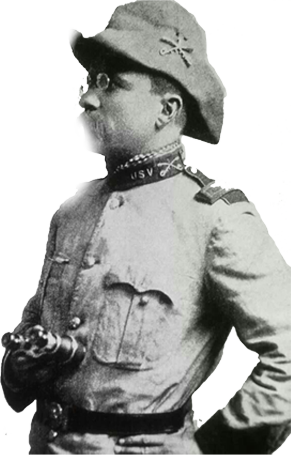Here’s to another year of chasing critters, filling freezers, and spending days afield with the family, friends, and pups that we cherish
With the new year quickly approaching, it’s time to reflect. The past 12 months were a mixed bag on the conservation policy front—with some exciting wins and a fair share of disappointments—but our staff still managed to get out and enjoy our hunting and fishing heritage.
Here are some of the stories and memories from 2016 that make all of the hard work worth it.
Ed Arnett, senior scientist

This year marks the 14th hunting season for my chocolate Lab, Sage, pictured here with one of my other Labs, Roux, and a limit of Nebraska pheasants—taken on publicly accessible private lands through Nebraska’s Walk-in Hunting Program. These days, Sage can only go on what I call my “high-grade hunts”—short walks in really good-looking habitat that more often than not produces some birds. On this day, Sage put up a rooster from its bed and made about a 60-yard retrieve after I dropped the bird on the second shot.
Chris Macaluso, Center for Marine Fisheries director

Over Thanksgiving week, I had the chance to take my four-year-old son, Hank, and my dad, Joe, fishing over in the marshes and canals east of New Orleans. Hank had been asking me to take him to catch a redfish for months and we finally got the chance. We caught speckled trout all day and finally, at our last stop, I hooked this 25-pound red. Hank got to help me fight it and he jumped up and down when we landed the fish. He couldn’t get over the fact that we had just caught a fish almost as big as him. This instantly became my favorite fishing trip of all time.
Nick Dobric, Wyoming field representative

This year, I helped two of my buddies each get their first elk—a rewarding experience for all of us. Then, after an amazing archery season chasing bugling elk but never getting a shot, I was fortunate to find an elk on my first morning out with a rifle. The first evening after backpacking into some wild country, I glassed a herd dropping over a pass and into my drainage. At first light the following morning, I was up on the ridge where I expected them to be and started hearing some bugles. Then I watched a cow pop out of the trees, and a big six-by-six shortly followed. I never had a good shot so I was just about to go put a stalk on him when this smaller bull popped out and started grazing broadside, and well within my range. I couldn’t pass him up.
Ed Tamson, Florida field representative

Yes, Florida water quality and Everglades restoration are ongoing challenges. Yet in spite of these stressors, it’s still possible to catch some backcountry red fish and snook. It’s a great motivator!
Kevin Farron, Western field associate

With a cow elk and a few limits of blue grouse in the freezer, my first fall in Montana has been rewarding. But more often than not, my reward for a day spent hunting is nothing more than a tired puppy. On this single-digit December day, Leo and I tried our luck for pheasants, something we’ve never hunted, and we were skunked. With the near-endless miles of Montana public lands to hide in, we had to tip our hats to the birds for avoiding us that day. But we’ll be back.
Steve Kline, director of government relations

Earlier this month I had a successful end-of-year reunion, about four minutes from our staff retreat location this past summer, with Chris Macaluso (who works from Louisiana) and former TRCP’er Cyrus Baird.
Joel Webster, Center for Western Lands director
 Another great elk season on America’s public lands. Conditions were tough, but our party hunted hard and managed to pack four bulls and three bucks into our Montana hunting camp. The freezers are full.
Another great elk season on America’s public lands. Conditions were tough, but our party hunted hard and managed to pack four bulls and three bucks into our Montana hunting camp. The freezers are full.


 Efforts were made to eliminate recent regulations during the first week. The House quickly passed two bills which aim to facilitate the removal of rules that were made in the final days of the Obama administration.
Efforts were made to eliminate recent regulations during the first week. The House quickly passed two bills which aim to facilitate the removal of rules that were made in the final days of the Obama administration. 







 Another great elk season on America’s public lands. Conditions were tough, but our party hunted hard and managed to pack four bulls and three bucks into our Montana hunting camp. The freezers are full.
Another great elk season on America’s public lands. Conditions were tough, but our party hunted hard and managed to pack four bulls and three bucks into our Montana hunting camp. The freezers are full.




How about associating dollar amounts with the source. LWCF provided how much in 2017 ? PRDJ provided how much to Colorado in 2018 ? Mountain bikers and hikers provided how much in 2018 ? ZERO. That’s how much ! How about if you advocate for a national excise tax on biking and hiking gear to go towards conservation, wildland preservation, maintenance, etc ? How about state-level “Bike Pass”, “Hike Pass” programs to fund all of the infrastructure that is needed ? The spandex/ treehugging crowd will howl in agony while they spend $5K on a bike and $400 on a pair of boots. The “Habitat Stamp” program was originally intended to include mountain bikers and hikers, yet Hunters and Fishers are the ones left holding the bag. Why ? Mountain biking and hiking is a billion dollar industry. When you get some equality here, I will become a Life Member like I am for RMEF and other worthwhile organizations. Thank you.